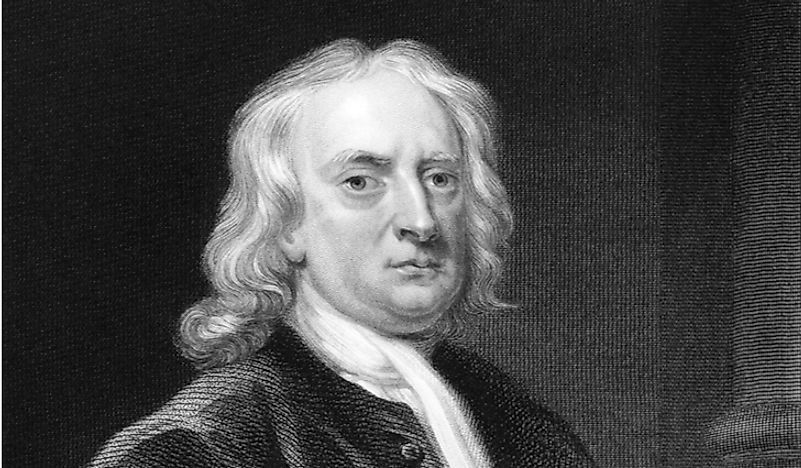Isaac Newton – Important Figures in History

Isaac Newton was born on December 25, 1642 in a place known as Woolsthorpe in England. His father, Isaac Newton, passed on three months before Newton’s birth. Isaac Newton’s mother was named Hannah Ayscough. Newton was born prematurely with minimal chances of surviving. At the age of three, Newton’s mother got remarried and moved away to stay with her husband. She left Newton with his maternal grandmother. Newton attended high school at The King’s School located in Grantham. He was ranked top of his class and in June 1661, Isaac Newton joined Trinity College in Cambridge. Besides his law degree course, he grew interest in he works of philosophers at the time such as Hobbes, Boyle, Aristotle and Galileo. He spent a lot of his free time studying their work.
4. Major Contributions
One of the major contributions of Isaac Newton was in optics. He invented and taught the use of a reflecting telescope 1668. The telescope came in handy in explaining his theory of light. He also published Hypothesis of Light and Opticks papers with the aim of shedding light on his theory of light. The theory of light became the basis of modern physical optics. Newton’s second important contribution was in mathematics. He was the first to develop infinitesimal calculus. Thirdly, Newton developed the Law of Gravity and developed the three laws of motion in modern physics. Isaac Newton also spent time studying the Bible and alchemy.
3. Career
Newton was elected a fellow of trinity in 1667. He was appointed as the Lucasian Professor of Mathematics in the year 1669. From the years 1670-1672 Newton lectured on optics and mathematics at Cambridge University. He succeeded Professor Isaac Barrow who was always impressed at his work. Isaac Newton became a fellow of the Royal Society (FRS) in 1672. Interestingly, besides Newton revolutionizing the science world, he had a political career too. In 1689-1690 he was elected to represent Cambridge in Parliament. He was appointed to serve as the “warden of the mint” while in parliament. In this position, Isaac Newton did a tremendous job which involved currency reformation and dealing with counterfeits. He moved the British sterling pound from silver to the gold standard.
2. Challenges
The greatest critic of Isaac Newton’s scientific work was Robert Hooke. He attacked Newton’s methodology and conclusions on the theory of light. According to Hooke, light was made up of waves. However, Newton believed light was made up of particles. Their differences in scientific opinion led to enmity between them and Newton almost quit the Royal Society. The members of the society were very supportive and defended Newton’s work against Robert Hooke’s plagiarism claims. Isaac Newton also had a challenge with his character. He felt very insecure about his contributions and did not welcome even constructive criticism from his peers.
1. Death and Legacy
Isaac Newton died on March 31, 1727 after suffering from digestion problems. He had severe abdominal pains which led to him blacking out, never to regain his consciousness again. He died at the age of 84 and was acclaimed as the most famous scientist in his time. He is known to have written the book called Mathematical Principles of Natural Philosophy. It is the most influential physics book that has ever existed. Above all things, Isaac Newton was the first man to discover the most fundamental law: The Law of Gravity. He left a lasting mark in the world of science. Isaac Newton was proclaimed by his contemporaries as the greatest genius who ever lived.











